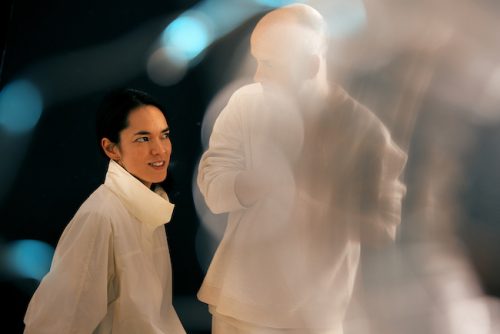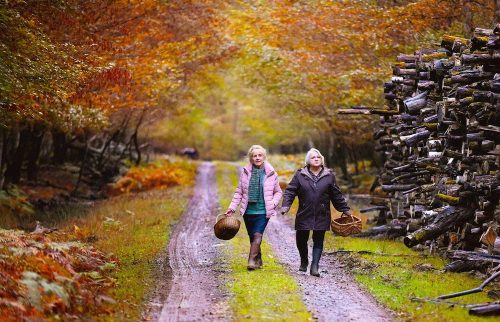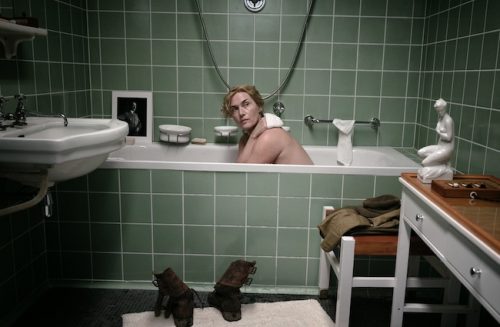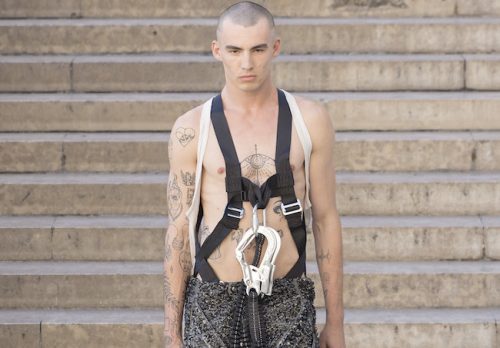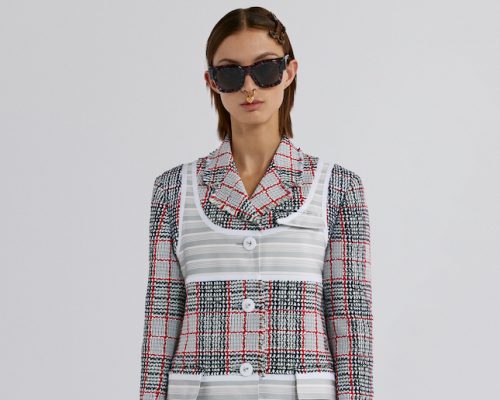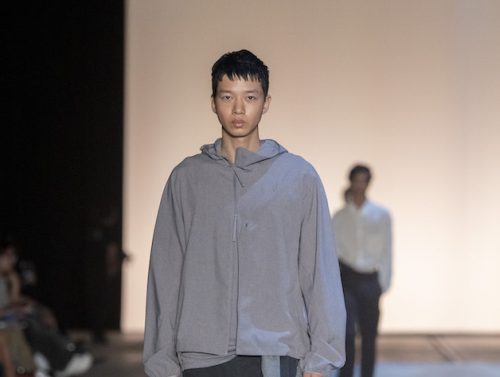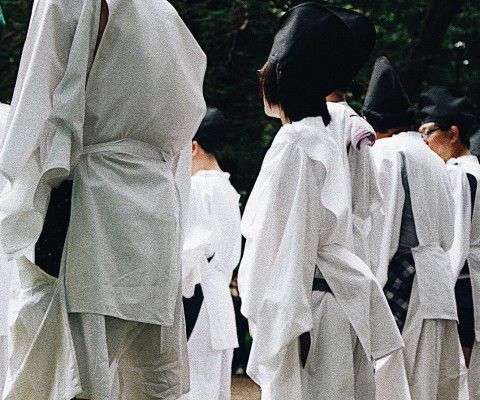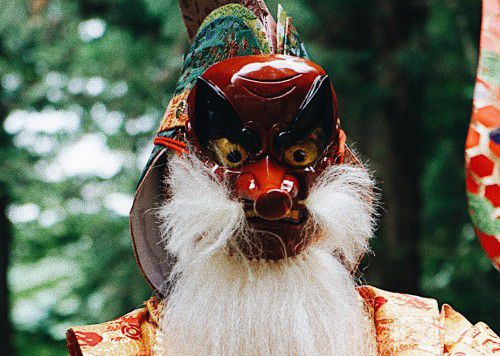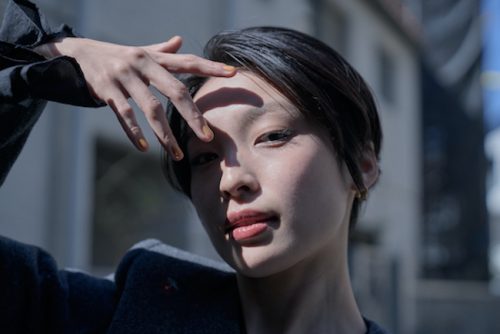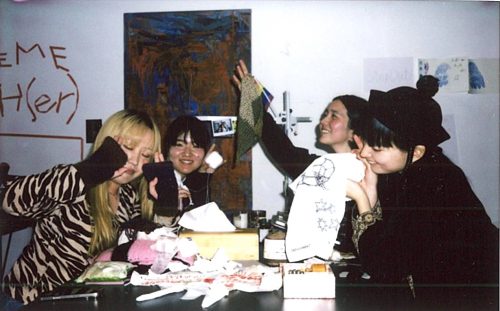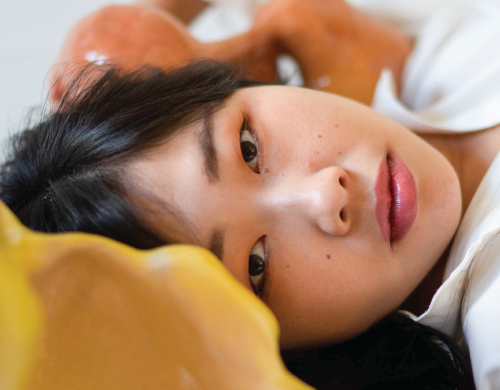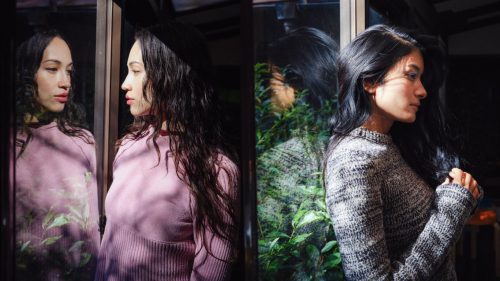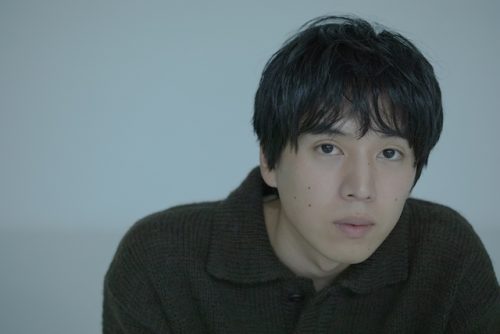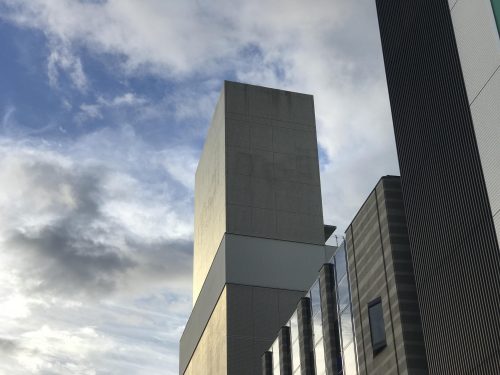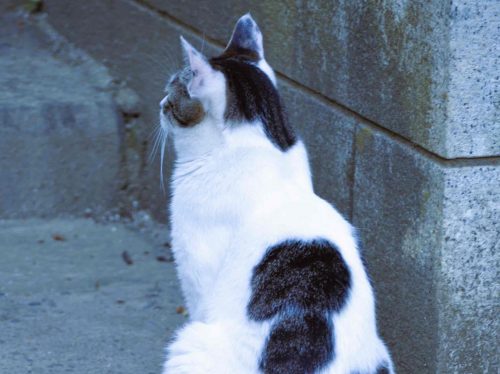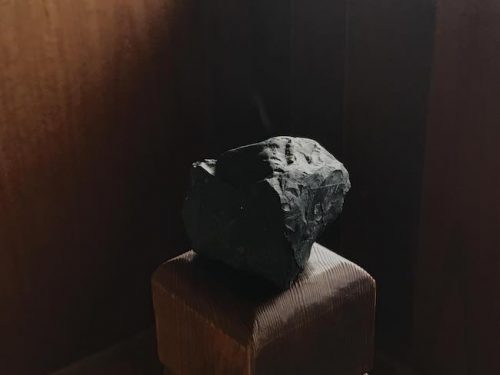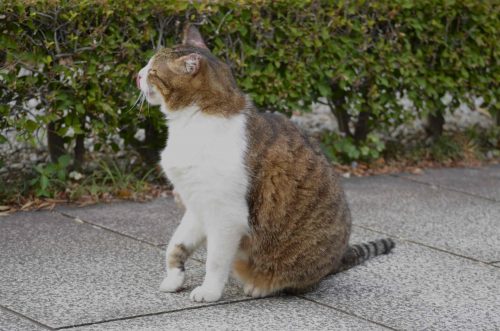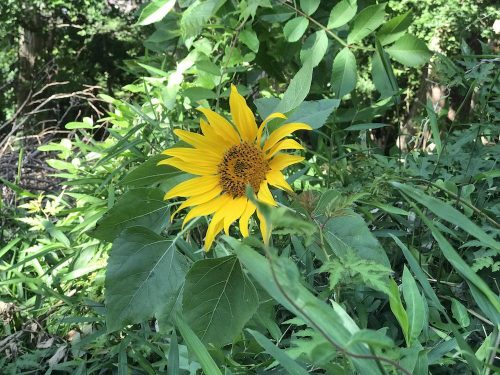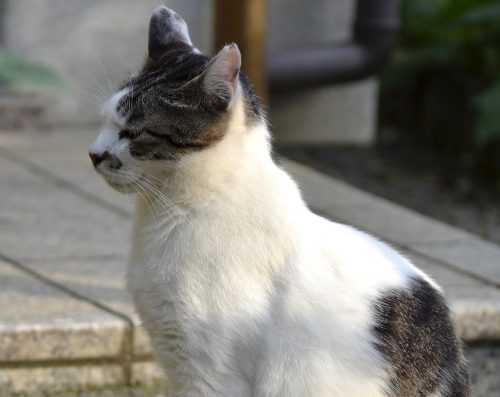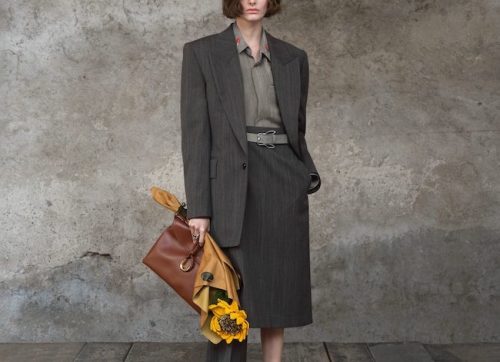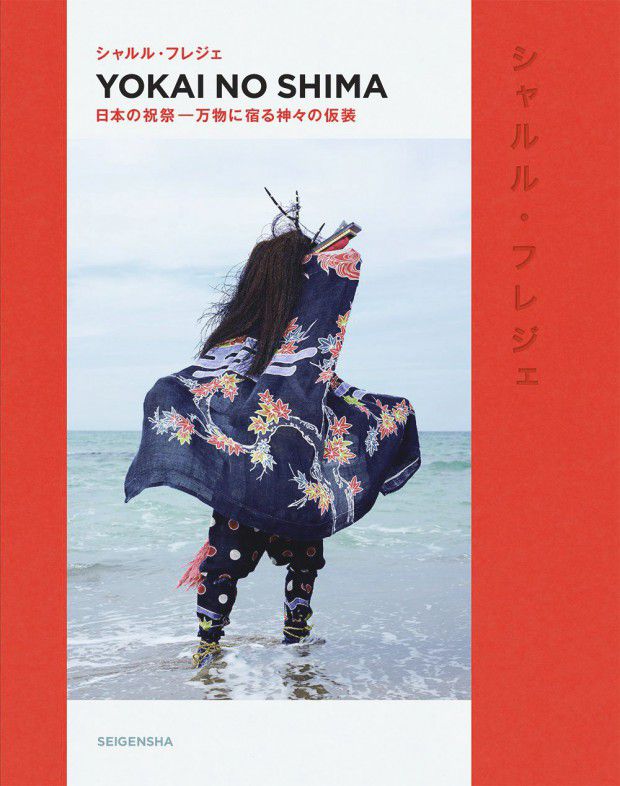
畏怖や奇妙さを与えながらも力強い美しさを湛える、ハレの日のためだけの衣装や装飾品。神に対する儀式として形成された祭りは、日本の社会的・文化的な側面の多彩さが体現されているものだ。神に祈りを捧げるための厳粛な儀式としての役割がもともとの祭りとしてのあり方であったが、時代が過ぎゆくにつれ人々にとっての楽しみという要素が多くを占めていくこととなった。
全国各地で一年を通し各季節ごとに行われ、また地域ごとに異なった対象をそれぞれの方法で祀るというものが日本の祭りの特徴である。祭りを通して人々は一つになり、祝うのだ。
1975年フランスに生まれ、特別な衣装や世界各地の様々な儀式が持つ性質を捉えることをテーマにしてきた写真家シャルル・フレジェが、日本58か所の地域における儀式的な衣装に身を包んだ人々のポートレイトを収めた『YOKAI NO SHIMA』。本書のタイトルは、祀るものへの人々の思いを指している。
神の存在とは、恐れ多いと同時に日本人にとって必然的であるという概念の表現を求めたフレジェは、ありのままの姿を収める単なるドキュメンタリーを超越し『YOKAI NO SHIMA』における衣装や装飾品をすべて空想のものとした。
被写体に向けられる彼の眼差しは、人々の生活に根差した習俗というものには連綿と続く歴史が作り上げてきた理由があるということを気づかせる。そこに収められる考え抜かれた被写体、練られた構図は見る者に物語をイメージさせ、日本人が持つ必然的な信仰心というものを身近なものにしてくれる。
また、身体的な動きも彼は重要視した。衣装に身を纏った被写体が表現する動きには、そこに暮らす人々のルーツというものを考えるうえで非常に深い関係性を持つということを示唆している。木の棒・剣といった装飾も同様であり、また虎や狐、猿が模された衣装や、被写体の背景となる撮影場所も入念に選ばれ、精神性を表すモチーフとして用いられている。
まるで全ての要素が一枚の写真にギュッと詰まって、一斉に私たちへ語り掛けているかのようだ。日本の祭りにあまりなじみのない人々にも、社会的・文化的な側面の連なりが感覚的に理解しやすいものとなっていて、ページをめくるごとに、四季の移ろいや地域性といったものが感じられる。
シャルル・フレジェは自身のテーマとする習俗や衣装といった彼独自の解釈をもとに、外国人写真家という日本の民俗学者とは異なった立場からなるユニークな観点で日本の祭りという物語を紡いだ。
地元に住む日本人にも完全には成り立ちが分からない習俗といったものに、外国人の彼が感覚的な魅力を感じ本書を制作するに至ったという点は、差別による人々の対立や世界の矛盾といった今日の我々が抱える問題を考えるうえで重要な点となると考えられる。
ポートレイトで構成された本書は、文化的な理解を深めるための第一歩にふさわしい。
自然に偏在する信仰心の中での暮らしと人々の繋がりの物語が語られている一冊といえるだろう。
Intimidating, bizarre, yet powerfully beautiful, the clothing and accessories shown in the book are all specially designed for the Japanese festival occasions. Matsuri (festival) in general is a form of religious ceremonies of a wide variety of civil and cultural aspects in Japan. It is usually consisted by two parts. The solemn ritual of worship as the main and followed by a joyous celebration. Matsuri in Japan is taking place all year long as it is divided by different seasons, and there are various kind of celebration all over different region across the land. It unites people together and celebrates their unique beliefs. The book title YOKAI NO SHIMA means the “Island of the Spirits”, which refers to all kinds of God in each region that are firmly believed as an embodiment of people’s faith in them. The photographs are taken by Charles Fréger, a French photographer who was born in 1975. Focusing on the special uniforms and costumes of various ritual characters, he started out taking portraits of ritual characters in all 58 local regions in Japan.
YOKAI NO SHIMA (Island of the Spirits) was fictional, but the photographer needed it to construct a place where the existence of God is sacred and inevitable just like how they are believed to be by local Japanese. Charles wanted to the portraits to be more than just for the purpose of documentary. The intention was to be connected with the subjects when he feels like capturing the story behind every character in its natural habitats. As we can tell from the photos, everything is calculated and staged carefully to illustrate the content of the story and transform the impression into an actual image which will eventually allow the audience to feel closer to their religious beliefs. The gestures are not easy to be neglected. Every character in their specially designed costumes is playing specific gestures which deeply relates to its origin. Props like wood sticks and swords are used as well. Animals such as tiger, fox and monkey are also portrayed in the picture to make the spiritual statement. The background is delicately chosen as the stage for the character. It almost feels like every detail is condensed into one photo and the story is well told. The idea is easy to get even for people who are not familiar with Japanese matsuri culture. The development of all aspects are shown. The changing of the season and location can be told when moving from one page to another.
Charles Fréger have made his own interpretation of the Japanese Matsuri stories with his focus on the costumes and uniforms. The perspective is different from usual since his identity is a foreign photographer rather than a Japanese ethnologist. The story is told with the distinction of confrontations and contradictions. There are points that are bizarre to be perceived even by local Japanese who do not fully understand the whole story behind it. The portraits are just the beginning for people who wants to dig into the cultural facet of it deeper. It should be the story of how human are living with their ritual beliefs in all kinds of natural environment and how they are forming each other.
text Baihe Sun
『YOKAI NO SHIMA 日本の祝祭 ― 万物に宿る神々の仮装』
著:シャルル・フレジェ
判型:B5変 / 総頁:256頁 /定価:本体3,800円+税
http://www.seigensha.com/newbook/2016/03/14114803
Amazon
